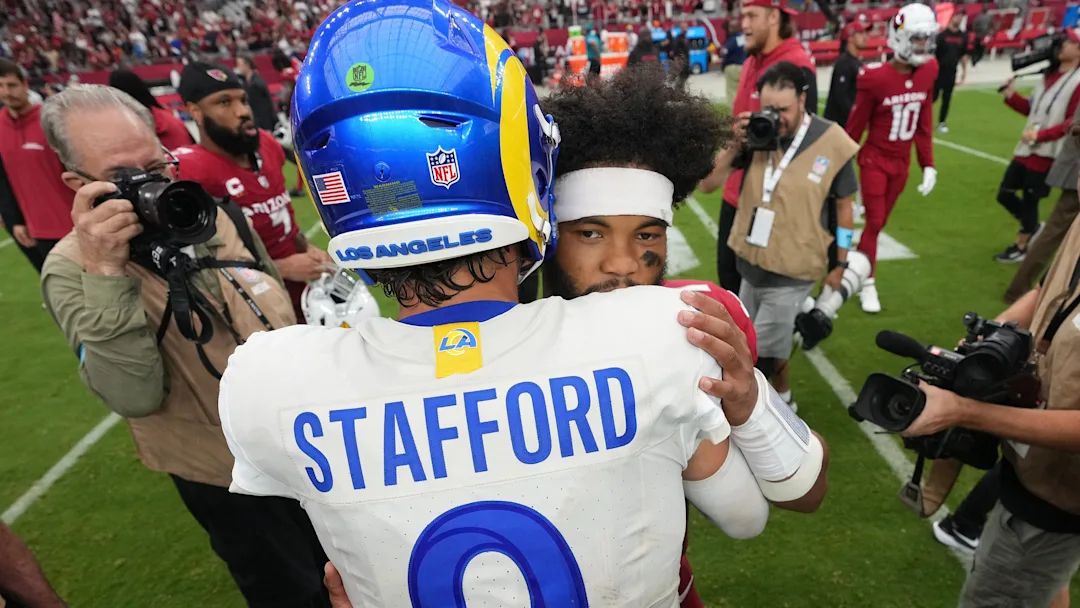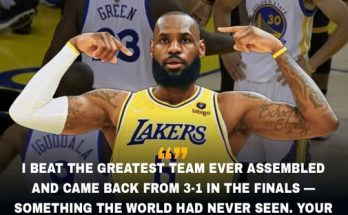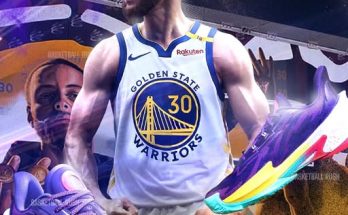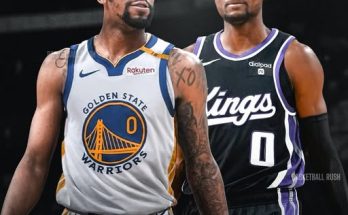The NFL quarterback landscape is constantly evolving. Each year, analysts, fans, and front offices reevaluate the hierarchy of signal-callers, comparing numbers, leadership qualities, playoff performances, and overall impact on team success. As the 2025 season approaches, it’s become abundantly clear that while Sam Darnold remains a topic of interest and curiosity, he continues to trail behind other starting-caliber quarterbacks like Matthew Stafford, Brock Purdy, and Kyler Murray in the rankings—and not without reason.
Darnold, once a top-three pick and considered a potential franchise savior for the New York Jets, has yet to live up to the lofty expectations that accompanied his entrance into the league in 2018. Meanwhile, the quarterbacks ranked ahead of him have carved out more successful and consistent careers, validating the skepticism that continues to surround Darnold’s standing in the league.
Matthew Stafford, for instance, boasts one of the most respected resumes among active quarterbacks. After a long stint in Detroit where he put up massive numbers without much team success, Stafford finally achieved validation by leading the Los Angeles Rams to a Super Bowl victory in the 2021 season. Despite battling injuries and inconsistent team performance in the years since, Stafford’s arm talent, football IQ, and ability to lead high-octane offenses remain unquestioned. His Super Bowl win places him in a category of quarterbacks who have done what Darnold has yet to come close to—win meaningful games on the biggest stages.
Even in his mid-30s, Stafford remains one of the most dangerous passers in the NFL when healthy. His ability to throw from multiple platforms, thread needles into tight coverage, and guide a team under pressure has kept him relevant in a league that’s constantly ushering in younger talent. Darnold, by contrast, has found himself in a series of backup roles since his disappointing Jets tenure, most recently joining the Minnesota Vikings with hopes of a career resurrection that still feels unlikely. Until Darnold proves he can consistently win games and deliver in high-pressure moments, he won’t sniff the tier that Stafford currently occupies.
Then there’s Brock Purdy, perhaps one of the most intriguing stories in recent NFL memory. A seventh-round pick famously labeled “Mr. Irrelevant” in the 2022 NFL Draft, Purdy has far exceeded expectations since taking over as the starter for the San Francisco 49ers. With a loaded roster and offensive mastermind Kyle Shanahan calling the shots, Purdy has demonstrated remarkable poise, accuracy, and decision-making. While some critics argue that he benefits from being in an ideal system with elite weapons, the fact remains that Purdy wins games—and that matters.
His quick processing, efficient play style, and surprising deep-ball touch have made the 49ers a perennial NFC contender since he assumed the starting role. Most impressively, Purdy has shown he can hold his own against elite defenses and deliver in crunch time. His leadership and consistency, coupled with a low turnover rate, have solidified his spot in the upper half of quarterback rankings. That’s something Darnold has never been able to sustain, even during his best stretches.
What separates Purdy from Darnold more than anything is the trajectory. While Darnold’s career feels like a series of missed opportunities, Purdy’s narrative is still building—an underdog turned franchise cornerstone. Despite Darnold briefly playing in San Francisco, even getting high praise in training camp, he was never a serious threat to unseat Purdy. The contrast between the two underscores just how much weight performance and consistency carry over draft status and raw potential.
Kyler Murray’s inclusion ahead of Darnold in the rankings is perhaps the least surprising. A former No. 1 overall pick, Murray’s tenure with the Arizona Cardinals has had its ups and downs, but there’s no denying his dynamic ability. When healthy, Murray is a dual-threat quarterback who can change the course of a game with a single play. His mobility, quick release, and improvisational skills make him one of the most electrifying players in the league.
Though injuries have limited his availability in recent seasons, Murray has still demonstrated more talent, production, and leadership than Darnold ever has. He’s a former Offensive Rookie of the Year, a Pro Bowler, and has led Arizona to the playoffs—things that remain elusive on Darnold’s résumé. Critics often point to Murray’s inconsistent play and questions about his dedication, but even at his worst, he’s shown flashes that Darnold simply hasn’t matched in real games.
Murray has faced criticism for his size and style of play, yet his statistical output when healthy justifies his place well above Darnold. His ability to make off-schedule throws, extend plays, and generate chunk yardage gives his team a fighting chance in almost any matchup. Darnold, meanwhile, has often been plagued by poor decision-making, costly turnovers, and an inability to elevate the talent around him. No matter how one slices it—by stats, eye test, or wins—Murray remains the superior quarterback.
The stark reality for Darnold is that potential no longer holds much currency in the NFL once you’ve had multiple opportunities and failed to deliver. Now in his late 20s, Darnold has bounced from the Jets to the Panthers, 49ers, and Vikings. Each stop has offered glimmers of hope—a good drive here, a big throw there—but never enough to cement him as a reliable starter. He’s often been called a “high-upside backup,” which is a backhanded compliment that ultimately defines his career thus far.
Darnold’s biggest enemy has been inconsistency. Whether it’s accuracy issues, questionable reads, or turnovers in key moments, he has struggled to string together performances that inspire long-term confidence. While his talent is still apparent—he has a strong arm and mobility—NFL quarterbacks are judged by results. And Darnold simply hasn’t produced enough of them. It’s no longer about what he might become; it’s about what he hasn’t become, and likely won’t.
The comparison becomes even starker when looking at leadership and intangibles. Stafford is universally respected for his toughness and resilience. Purdy is lauded for his humility, composure, and team-first mentality. Murray, for all the talk about his personality, has nonetheless been a centerpiece of Arizona’s offense and commands the respect of his peers when he plays. Darnold, on the other hand, has struggled to establish a clear identity. He’s quiet, occasionally flashes confidence, but hasn’t shown that magnetic leadership quality that top quarterbacks possess.
It’s worth noting that the NFL is not always fair. Context matters. Darnold began his career with a dysfunctional Jets franchise, lacking in talent and vision. That certainly didn’t help his development. But the same can be said for many quarterbacks who have managed to rise above their circumstances. Josh Allen had a slow start but blossomed into an MVP candidate. Jared Goff was written off after being traded from the Rams, only to find new life in Detroit. The difference is, those quarterbacks adapted, grew, and delivered. Darnold hasn’t.
At this stage of his career, Darnold is firmly in the “prove-it” tier. He must take advantage of every opportunity if he hopes to reclaim even a mid-level starting job. With the Vikings, he could find himself starting early depending on the progress of rookie J.J. McCarthy, but the leash will be short. One more stretch of turnovers and inefficient play might be the final nail in the coffin for his starting aspirations. Meanwhile, Stafford will continue to operate as a trusted veteran, Purdy will keep developing in a quarterback-friendly system, and Murray, barring injury setbacks, will remain a central figure in Arizona’s rebuild.
In the brutal meritocracy of the NFL, reputation is earned, not inherited. Draft position might open doors, but it doesn’t keep them open. That’s why Stafford, Purdy, and Murray are comfortably ahead of Sam Darnold in current quarterback rankings. They’ve proven more. They’ve accomplished more. And most importantly, they’ve shown that they can lead teams, not just be passengers.
For Darnold, the window to redefine his legacy isn’t shut, but it’s closing. He has the tools, he’s had the time, and now it’s about results. If he wants to shake the label of unfulfilled potential and move up in the rankings, it will take more than a few impressive throws in mop-up duty or preseason flashes. It will require sustained excellence, a playoff berth, and a transformation in how he’s perceived by teammates, coaches, and fans alike.
Until then, Stafford will remain a Super Bowl-winning veteran with elite pedigree, Purdy will continue to shine as a system-executing winner, and Murray will electrify defenses with his dual-threat brilliance. And Darnold? He’ll still be chasing what they’ve already achieved. That’s the reality of the NFL—and the gap he must close if he ever wants to be more than an afterthought in the quarterback conversation.



